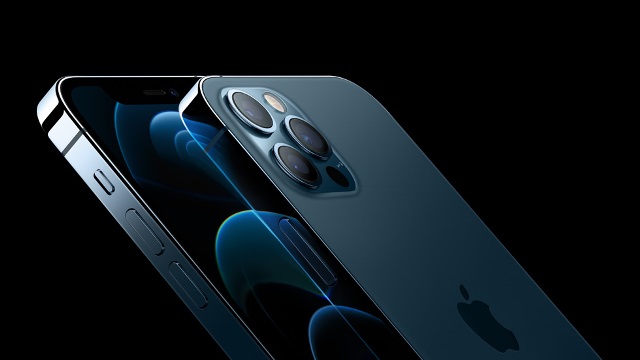Analysts at research firms Omdia and CounterPoint Research have revealed that the launch of the costly iPhone 12 by US-based Apple will prompt telecom operators to expand their 5G network coverage.

The IDTechEx report has explained challenges in the expansion of 5G network despite the global launch of Apple iPhone 12.
The number of commercial 5G mobile broadband networks launched globally reached 109 in Q3 2020, according to Omdia.
When taking into account networks that use 5G to deliver home broadband services (Fixed Wireless Access FWA), the total number reached 140.
Western Europe has the largest number of commercial 5G mobile broadband networks, at 33, followed by Asia-Pacific with 31, and the Middle East, with 17. The Middle East has the highest number of live 5G FWA networks, at 11, followed by Western Europe, with 8, and Asia-Pacific, with 6.
5G is already the second fastest-growing new cellular network technology ever launched by the telecoms industry, behind only the first mass-market mobile service, 2G (GSM).
The number of mobile broadband networks is 38 percent higher than it was for 4G two full years after the first launches, while in its first full year of commercial services 5G exceeded the total number of subscriptions 4G had after three years.
85 percent of CSPs have yet to launch 5G. This is partly due to local governments not making the 5G spectrum available yet.
Omdia expects there will be over three billion 5G mobile subscriptions by 2025, representing nearly one third of all total mobile subscriptions.
Paul Lambert, principal analyst at Omdia, said: “Telecoms industry has been more successful than ever in agreeing extremely complex 5G technology standards, and then manufacturing network equipment and devices that enable service providers that want to get a head-start on 5G to launch.”
5G smartphones from manufacturers such as Samsung and Huawei are available in the market. However, consumer interest in 5G smartphones is set to grow following October’s iPhone 12 launch, Apple’s first 5G smartphone.
Apple’s launch will have a significant effect on the telecoms industry as it will encourage service providers that have yet to build their 5G networks to begin their planning. It will also enable SPs to justify the new investments required to expand and enhance coverage beyond initial areas because more people will be ready to access 5G.
Meanwhile, even faster 5G speeds made possible by mmWave spectrum, which the iPhone 12 currently supports in the US, will enable service providers and their partners to create rich new site-specific services, for example in stadiums and shopping centres.
One disappointment is that mmWave is supported by US models, which means Europeans will have to make do without the fastest 5G speeds.
There are currently 45 live 5G networks across 20 countries in Europe. 32 more operators in a further 13 countries have announced plans to launch.
Jan Stryjak at CounterPoint Research said Europe has a significant number of loyal iPhone users who were waiting for a 5G upgrade. The launch of iPhone 12 will prompt mobile operators to increase 5G coverage in Europe.
Samsung S20 has done well, selling 2.5 million units since launch. Huawei P40 is struggling due to the lack of GMS and pervasive anti-China sentiment. Xiaomi, OnePlus and OPPO suffer from a lack of brand power.
Analysts agree that 5G network coverage is still patchy. In the UK, though all operators have launched 5G, it is only available to around 30 percent of the population.
EE has switched on 5G in another 12 UK towns and cities bringing the total to 112. Spain’s Telefonica promises to cover 75 percent of the population by the end of this year.
Phone companies have sold just under 2 million 5G devices in July in Europe, which is 11 percent of the total.
Mobile operators have concentrated their 5G rollouts on urban centres. But the COVID-19 situation means many people are avoiding the cities and working from home, typically in suburban or even semi-urban areas, where 5G coverage has been less of a priority.
Most mobile operators have coverage tools on their sites for potential customers to check if they live within a 5G area, so why would people want to upgrade to 5G if they can’t access it at home?
The IDTechEx report forecasts there will be 430,000 new installation of 5G base station in 2020 and such number will boost to over 4 million in 2030.
The new iPhones feature the most 5G bands on any smartphone and offer the broadest 5G coverage worldwide. However, the majority will stick to a few 5G bands only. 5G coverage is still so low that many people are not able to use the 5G service often.
Power consumption is a concern as 5G signal will consume significantly higher power than the 4G smartphone. This will have severe knock-on effects for battery life & management, thermal management, and mobile lifespan. This problem will become obvious for the models in the US, which support millimeter wave (mmWave), the higher frequency version of 5G (24-40 GHz).
Another challenge for 5G technologies, especially for mmWave 5G, is the transmission loss. The IDTechEx report points out that low-loss materials and integrated design for antennas and RF modules are becoming essential for 5G.
Baburajan K





